Showing 1–10 of 20 results

The Bodo, an ancient group of Northeast India, is resorting to a movement for autonomy. A section of the Bodo educated youth being thoroughly disillusioned with constitutional safeguards, like autonomy arragements, joined a secessionist struggle, which has not only radically transformed the character and substance of the Bodo assertion from autonomy to secession in terms of goals, but also the methods of achieving it, by showing prefernce to voilence. Tracing historical background of the Bodos, this book seeks to analyse the emergence of the NDFB, its supoort base, and its major demands and strategies to achieve them. It also examines the factors that persuaded the NDFB to adopt extermist methods for achieving its goals, the nature and extent of support for the NDFB’s demand for a Savereign Bodoland, the relationship of NDFB with the other Bodo organiztions and responses of the BTC, as well as Union and State Goverments to the demands of the NDFB.
The Bodo, an ancient group of Northeast India, is resorting to a movement for autonomy. A section of the Bodo educated youth being thoroughly disillusioned with constitutional safeguards, like autonomy arragements, joined a secessionist struggle, which has not only radically transformed the character and substance of the Bodo assertion from autonomy to secession in terms of goals, but also the methods of achieving it, by showing prefernce to voilence. Tracing historical background of the Bodos, this book seeks to analyse the emergence of the NDFB, its supoort base, and its major demands and strategies to achieve them. It also examines the factors that persuaded the NDFB to adopt extermist methods for achieving its goals, the nature and extent of support for the NDFB’s demand for a Savereign Bodoland, the relationship of NDFB with the other Bodo organiztions and responses of the BTC, as well as Union and State Goverments to the demands of the NDFB.
The aim of this book is to achieve a proper theoretical understanding of democracy through philosophical explorations. By these explorations we want to reach some unitary decision on at least three things. The first one involves the concept of democracy. The next one is concerned with the purpose of democracy. The final one is concerned with what is necessary for ensuring and developing democracy in a state or society in the absence of which democracy gets threatened. We will explore and analyze the interconnections between these three dynamics.
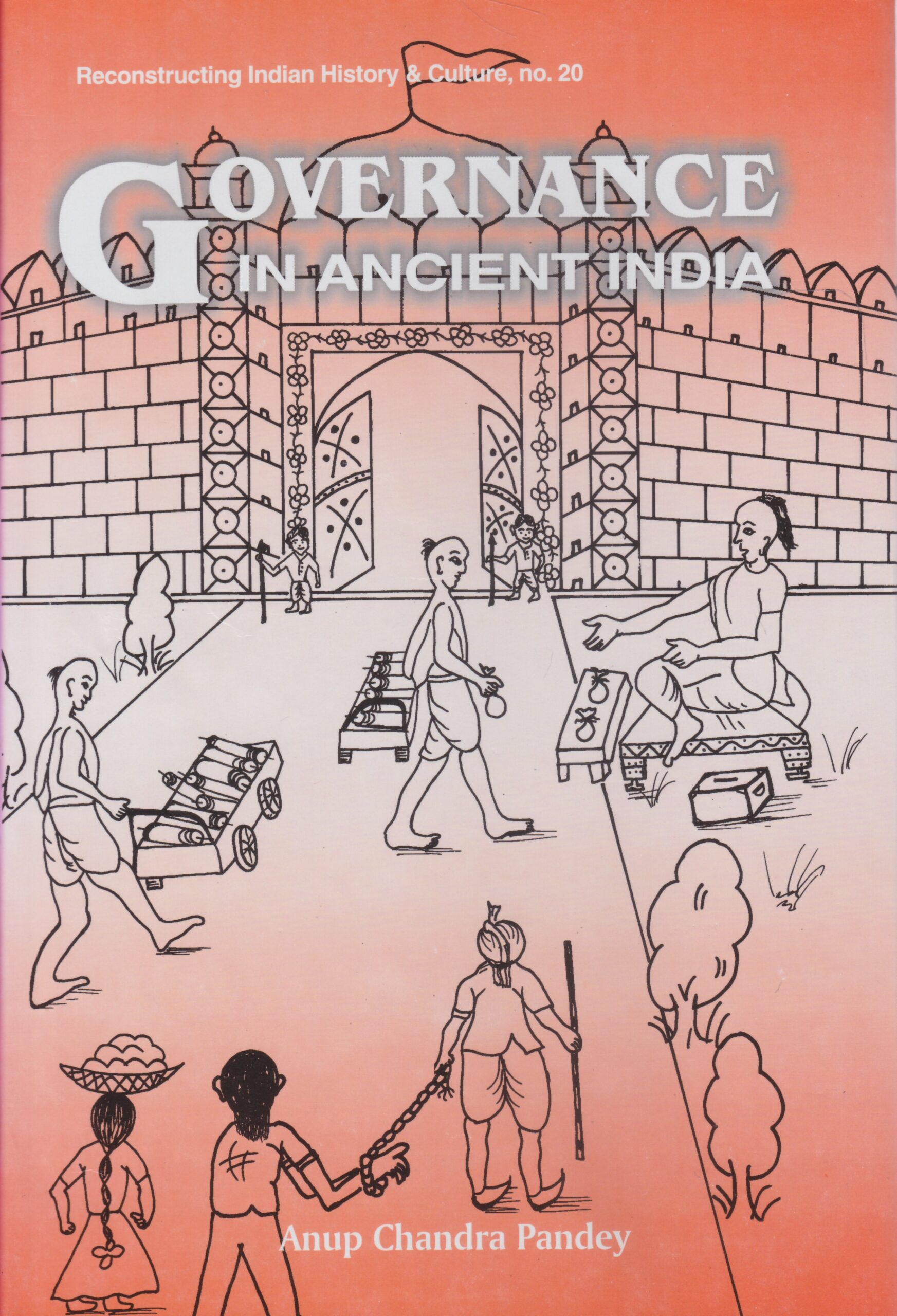
The research examines the nature, development and function of the civil service in ancient India. It explains the ancient perceptions of good and ethical governance study literary, inscriptional and numismatic evidence.
From the Vedas to Sutra and Smriti texts, from the time honoured epics to the foreigners travelogues and literary classics leave alone Kautilyas far-famed Arthashastra and other treatises of its genre, ancient Indian literature carries myriad references, bearing out not just the principles, philosophy and mechanisms of good governance, but the existence of a well-organised, hierarchical civil service as well. Yet Dr. Pandeys happens to be the first ever research effort to consider governance/civil service in ancient India: in all its different manifestations. Covering a vast time-span: from the Vedic times to about the seventh century ad, Anup Pandeys research explores the evolution, nature, scope, functions, importance, and other kindered aspects of the ancient Indian civil service with meticulous description of its varying contours during the reigns of the Mauryas, Indo-Greeks, Shakas, Pahlavas, Kushanas, Imperial Guptas, and Harshavardhana. Also, the book tries to unveil the ancient Indian politys perceptions/norms/modes of good, ethical governance, largely on the basis of sacred works, like the Ramayana and the Mahabharata. Together with inscriptional and numismatic evidence, the author has marshalled an astonishing mass of literary sources to show, beside a lot else, how an efficient civil service in ancient India was viewed as an imperative for the vitality of the state; and why, therefore, high-ranking functionaries/bureaucrats, entrusted with legislative, executive, financial and the like offices, or with policing and military duties, were often scrupulously chosen from among the politys best talent. Invaluable to the scholars of anceint Indian history, political science and government.
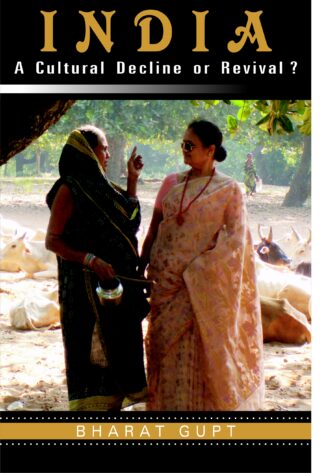
This book critically analyses the state of affairs in India after the British left in 1947 and examines whether Independence has ushered an era of cultural and social freedom or a cultural decline has set in a thought-provoking subject.
It is often taken for granted that Independence from the British rule also ushered an era of cultural and social freedom in India. The author wishes to examine if that is true or if a cultural decline set in soon after. Based on a verse in the Pancatantra, the book has been divided into six parts: Eka (person), Kula (family), Grama (habitat), Janapada (land), Prithvi (earth) and Atma. Issues of education; conflicts between the classes, regions, jatis, languages and religions; expansion of proselytizers; lack of governance; tensions between the legislators and judiciary; rise of unbridled consumerism; falling standards of democracy; dilemmas created by notions of dharma challenged by Westernized modernity; and the problems of attaining universal harmony, are all put into a perspective under these six categories. While examining the state of affairs the author also suggests a way for the pursuit of happiness through unselfish transcendence.

This book critically analyses the state of affairs in India after the British left in 1947 and examines whether Independence has ushered an era of cultural and social freedom or a cultural decline has set in a thought-provoking subject.
It is often taken for granted that Independence from the British rule also ushered an era of cultural and social freedom in India. The author wishes to examine if that is true or if a cultural decline set in soon after. Based on a verse in the Pancatantra, the book has been divided into six parts: Eka (person), Kula (family), Grama (habitat), Janapada (land), Prithvi (earth) and Atma. Issues of education; conflicts between the classes, regions, jatis, languages and religions; expansion of proselytizers; lack of governance; tensions between the legislators and judiciary; rise of unbridled consumerism; falling standards of democracy; dilemmas created by notions of dharma challenged by Westernized modernity; and the problems of attaining universal harmony, are all put into a perspective under these six categories. While examining the state of affairs the author also suggests a way for the pursuit of happiness through unselfish transcendence.
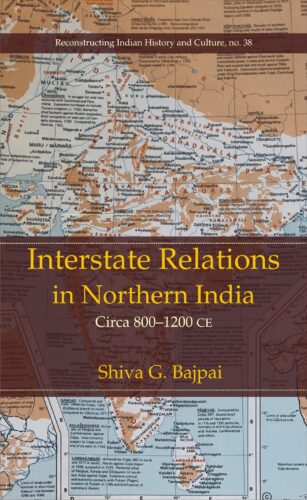
Interstate Relations in Northern India (8001200 ce) is a critical analysis of the Empire and State, the RÀja-Maõçala, in medieval India. The book is an excellent interpretation of the composition of the state, the ancient Indian principles and categories of interstate relations dealing with rÀjya and maõçala (circle of states).
This thoroughly researched work examines the state and its seven constituent elements (rÀjya). While avoiding the temptation of using Western categories and principles of international law, it provides an explanation of classification of states based on power, independence, tribute and political allegiance. In particular, it defines and analyses the ÈÀçguõya (sixfold policy of sandhi (peace), vigraha (war), yana (marching), Àsana (staying quite), dvaidhÁ-bhÀva (dual policy) and saÚraya (seeking shelter thereby correcting earlier misconceptions)). Furthermore, the theoretical formulations of circle of states and interstate relations between (8001200 ce) have been placed in a historical context, and well attested by historical instances in north India. Based on geopolitics and power it demonstrates the impact of political thought on political expedients, stratagems and events, at a crucial time in Indian history. The influence of ideas on political behaviour of kings and trajectories and policies of kingdoms of the Candellas, PÀlas, ParamÀras, PratihÀras, RÀjpÂts, CÀÒukyas, RÀÈÇrakÂÇas, Arabs and CÀhamÀnas have been substantiated with facts and evidences.
The author, Dr Shiva Gopal Bajpai, is to be congratulated for providing an accurate analysis of ancient Indian political theory and interpretation of its practical application by medieval rÀjÀs, thereby making a significant contribution to our understanding of Indian history.
The book thus delves deep into the philosophies of both Bdaryaa and akara in enunciating the essential features of Brahman and Its association with the world. It thus discusses topics such as what sort of cause Brahman is?, and what sort of material causality is to be ascribed to It? It also addresses the conflicting views on the nature of Brahman like that of Vivarttavda and of Rmnuja’s Sagua-Brahman.

This work studies the scientific and technological contents of the Arthasastra. It makes inquisitive analyses to extract the latest scientific essence of observational facts, operational techniques, perceptual awareness of discriminal and classificatory propositions and hypotheses in fields like mineralogy, gemmology, mining, metallurgy, agriculture, architecture, civil engineering and environment, dealt within the treatise.
A Sanskrit treatise of the fourth century bc, Arthashastra is, ostensibly, the world’s oldest surviving document of its genre. Written by Kautilya (also known as Vishnugupta and Chanakya): the astute Brahmin preceptor and prime minister of Chandragupta Maurya, it is now widely recognized as a classic on statecraft, including a discussion of contemporary Indian polity, political theories, administrative mechanisms, war and peace, and a variety of other subjects. Though a lot has already been written on Kautilya’s world view of statecraft, polity and kindred themes, this book is veritably the first ever effort to examine Arthashastra from the standpoint of modern science and technology. Analysing meticulously layers after layers of Kautilya’s complex sutras (aphoristic statements), the author unfolds scientific perceptions, hypotheses, operational techniques and other significant dimensions of several ancient Indian disciplines, like minerology, mining, gemmology, metallurgy, agriculture, town planning, civil engineering, and even environment. Himself a professional geologist, Sunil Sarma has adopted the current normative techniques for the scientific evaluation of Arthashastra, while using all through modern idiom to spell out its scientific content. An unbiased study based on Sarma’s honest, altogether fresh interpretation of Arthasastra’s archaic Sanskrit language and its peculiar scientific terminology, the book will fascinate Indologists, historians of science, and many area-specialists.
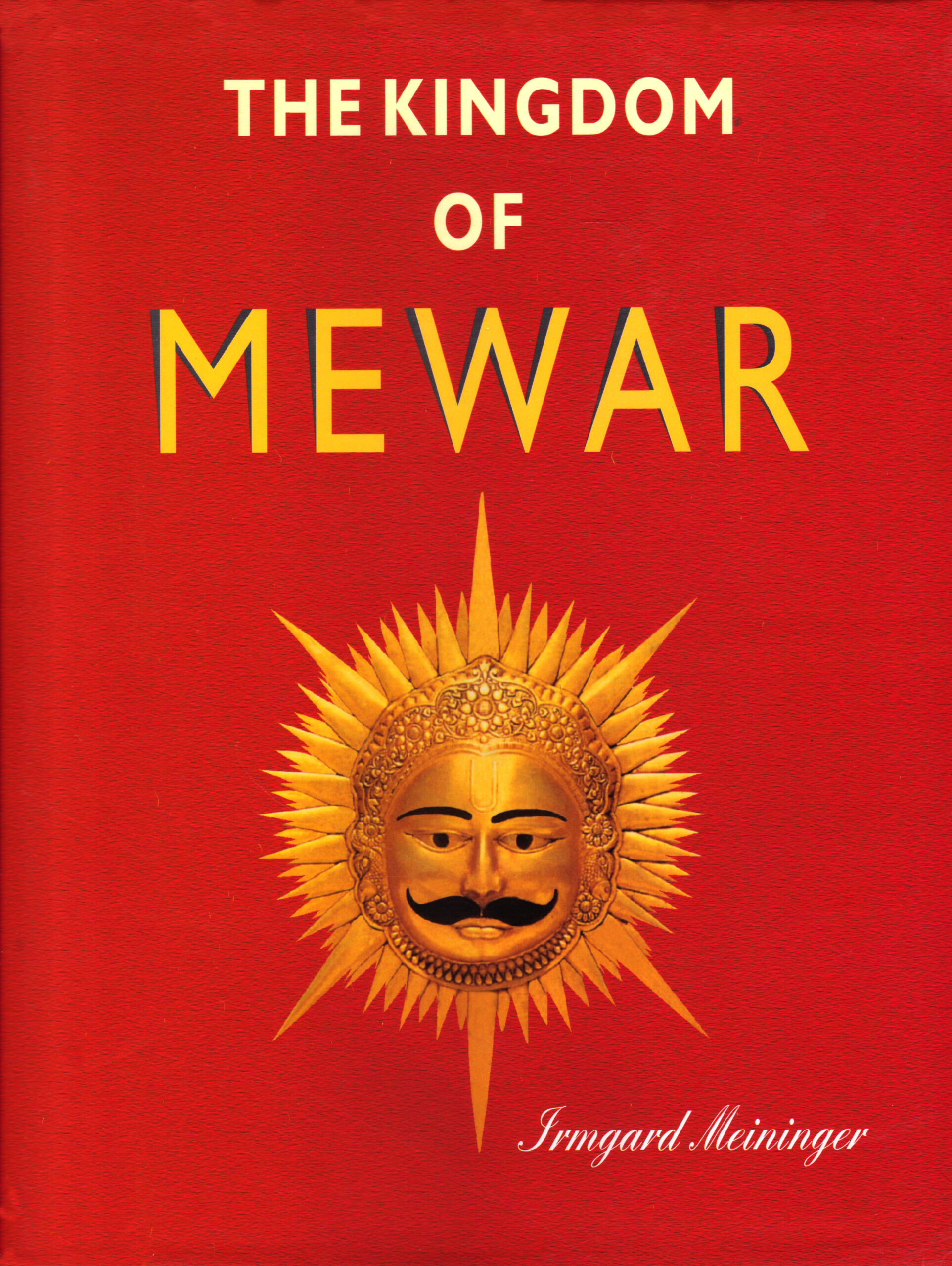
Supported by beautiful illustrations, the study reconstructs the glorious history of the Rajput house of Mewar, perhaps the worlds oldest ruling family. It recounts its heroic battlefield engagements and examines its artistic and literary achievements.
A Premier princely state of Rajsthan, the erstwhile Rajputana (northwest India), till its merger into the Union territory in 1948, Mewar has been celebrated in history and legend. In this far-famed region are best represented not only the Rajput chivalry and high sense of honour, but also their arts, architecture, and fabulous cultural traditions. Developed from the authors four-year long intensive research, the book tries to reconstruct the unparalleled, glorious history of (perhaps) the worlds oldest ruling family: the house of Mewar now called the clan of Sisodias, in earliest times Guhilots. Tracing chronologically the entire course of events since their first known ancestor, Guhil (ad 566), Irmgard Meininger here unfolds a compelling story of brave Rajput men and women, with an exaggerated sense of honour, pride and independence the story of their triumphs and tragedies, and simultaneously of palace intrigues and rivalries, and of supreme sacrifies and treacheries. And yet, in the main, it is an exciting story of Mewars heroic resistance: first to Afghan/Arab adventures and Delhi Sultans and, in the later days, to the Mughal imperialists. Weaving into her narrative the legendary episodes around Maharani Padminis fabulous beauty, the dread rite jauhar, Panna Dais unique loyalty, and Princess Miras bhakti, among others, the author also attempts to show how Mewar has been the repository not only of old Hindu traditions, but of the enchanting Rajput culture as well, and how Rajputs, notwithstanding their endless engagements in the battlefield, were great patrons of art, architecture, literature and music. Supported by numerous beautiful illustrations, bibliographic references and a glossary of non-English words, the book will fascinate anyone interested in India, particularly Rajasthan: whether as an inquisitive reader, tourist, hostorian, or a connoisseur of art.

Matrimonial alliances between royal families were a prominent feature of politics in ancient India. Beginning with matrimonial relations among the shodash-mahajanapadas, the book traces alliances formed by the Nandas, Mauryas, Indo-Greeks, Shakas, the Imperial and later Guptas, etc. from the sixth century bce to the seventh century ce.
Matrimonial alliances between royal families to further the power, prestige and influence were a prominent feature of politics in ancient India. This volume examines the matrimonial alliances among the ruling dynasties of ancient India from the sixth century bce to the seventh century ce. Beginning with matrimonial relations among the shodash-mahajanapadas that flourished before the time of the Buddha, the book traces alliances formed by the Nandas, Mauryas, Shungas, Satavahanas, Cedis, Indo-Greeks, Shakas, Pahlavas and Kushanas, the Imperial Guptas, Vakatakas, the Later Guptas, Maukharis and Varadhanas. Dr Preeti Prabhat studies the important places accorded to such alliances by rulers in their foreign policies. She views their beneficial and adverse impact for royalty. They led to expansion as in the case of the Mauryan kingdom, opened new avenues for economic growth, and helped powers retain their independence as for the Satavahanas (from the Shakas). But they also created jealousies and rivalries between family members and neighbouring kingdoms. She relies on a host of historical accounts from Ceylonese Chronicles and Greek writings to Hindu religious literature and secular writings as well as archaeological evidence including epigraphic and numismatical sources to produce a comprehensive research. The book will interest scholars of Indian history focused on ancient Indian polity as well as general readers interested in knowing about politics of mighty kings and kingdoms of ancient India.
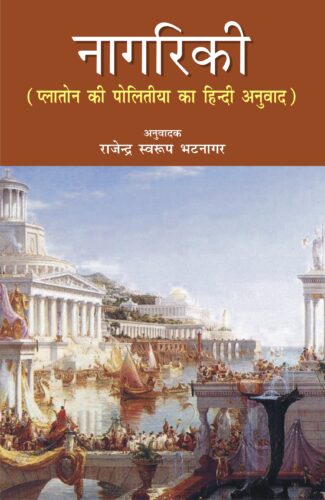
Nagariki is a Hindi translation of Politeia of Platon (Plato). Usually the subject matter of the book has been taken to be the organization of state or city and it has been thought that Plato is presenting an ideal form of the state or city. But it appears that this kind of discussion has been a way to present the notion of justice and to show how it is different from injustice and what is its role in the life of an individual and the city.
This book Nagariki is a Hindi translation of Politeia of Platon (Plato). A number of translations of this book are available in English entitled the Republic.
In fact the Republic is not the proper translation of Politeia of Platon for Plato did not accept the idea of democracy, on the contrary he had criticized this form of state.
Ordinarily the theme of the book has been taken to be state or the polity of a city. Usually it is understood that Plato is presenting an ideal form of a state. But it seems that the discussion of the forms of state is meant to show what is the notion of ßjusticeû, how is it different from the notion of ßinjusticeû and what significance it has in the context of an individual and the city.
Two things have specially been taken care of in this translation. First, that it brings us nearer the Hellenic or Greek atmosphere. Second, the dialogue has been presented in such a way that the conversation is taking place among the people who are intimate and familiar with each other. This translation aims to convey the notion of virtue and its relation to justice. In Politeia the discussion on virtue has been conducted in the context of both Þ individual as well as the city. As compared to other dialogues of Plato, the notion of virtue is highlighted in this dialogue in a more significant way.
The presentation of this translation has also been felt necessary because other translations in Hindi are not easily available.
| There are no products |